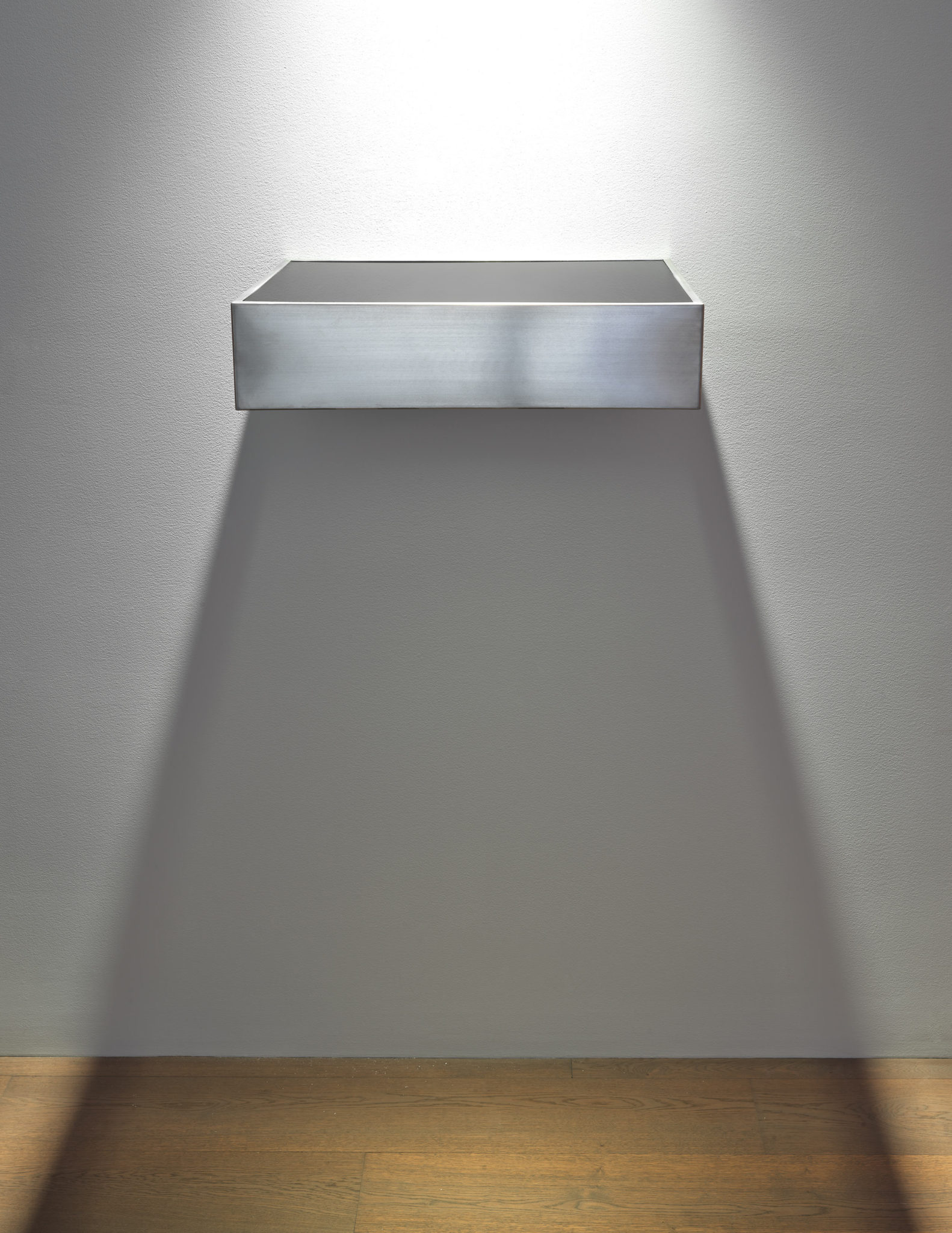Donald Judd
Untitled, 1969
Stainless steel and gray acrylic sheet
6 1/8 x 27 1/8 x 24 inches (15.6 x 68.9 x 61 cm)
© Artists Rights Society (ARS), New York
Photo: Farzad Owrang
I have always considered my work another activity of some kind. I certainly didn’t think I was making sculpture.
—Donald Judd
After serving in the military and returning to the United States in 1947, Donald Judd enrolled at Columbia University on the GI Bill to study art history and philosophy, simultaneously taking painting classes at the Art Students League. He both made art and wrote, working as an art critic through the mid-1960s. Though he would devote himself primarily to his artistic practice from that point onward, Judd would continue to write and nurture his own influential ideas on aesthetics throughout his career. Though he rejected the term Minimalism, Judd’s body of work would exemplify the movement’s conceptual concerns and visually define its character.
In its precise approach to seriality, geometry, and color, Judd’s work embodies a reductive vocabulary of known forms; the box in particular was essential to his repertoire. Untitled (1969) is a three-dimensional wall-mounted unit that emerges into the viewer’s space, redefining the historically defined limits of painting and sculpture in Western art. The top and bottom of the box are composed of gray plexiglass and the sides are made of stainless steel, both materials dynamically reflecting the passage of light. Even in his use of a grisaille palette, Judd was aware of the harmony of light and color, tying them to his study of painting, through which he absorbed the influences of such artists as Barnett Newman, Frank Stella, and Clyfford Still.
In the early 1960s, Judd started working with artisans and industrial fabricators to produce flawlessly finished sculptures; this differentiated him from others like Carl Andre and Richard Serra, who often cast their works in unfinished metals. Judd and his contemporaries conducted a serious inquiry of space from a phenomenological perspective, emphasizing how the object interacted with viewers within the space where it was installed and acknowledging how its material form and scale could impact the affective texture of one’s experience. Created with the artist’s characteristic precision, the present wall-mounted work thereby encourages new perceptual awareness on the part of the viewer.
Recently, the Museum of Modern Art, New York, opened a major retrospective on the work of Donald Judd, spanning from the artist’s early paintings to his iconic boxes and stacks.




